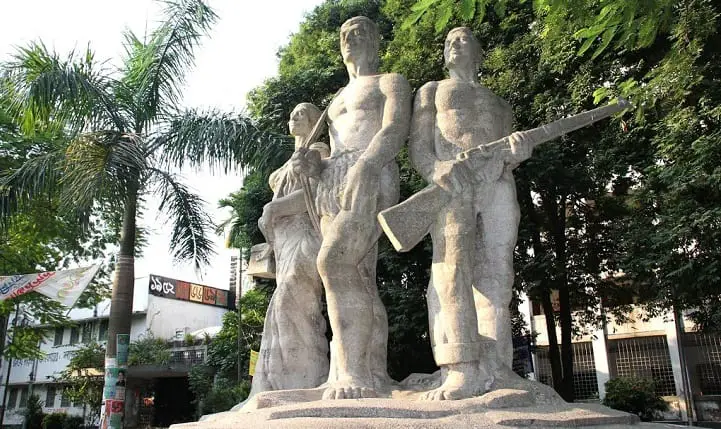“Dhaka” is the capital city of Bangladesh and the main city of Dhaka division. Dhaka is a megacity and one of the major cities in South Asia. It is located on the banks of the Buriganga river and it is the largest city in Bangladesh. The Metropolitan area of Dhaka has a population of about 14 million. It is one of the ninth largest in the world and one of the most populous cities. Dhaka city is also known as ‘City of the Mosque’. Here the world’s best muslin fabrics were produced. Besides, Dhaka is also known as ‘Rickshaw Capital of the World’. About 400,000 to 450,000 rickshaws operate in this city every day. Today Dhaka is one of the main cultural, educational and commercial centers of South Asia.
Naming History
There is a wide disagreement with the exact history of naming Dhaka. It is said that the king of the Sen Dynasty, Balal Sen, found an enviable Hindu goddess Durga in the adjoining jungle while traveling on the banks of the Buriganga River. King Ballal Sen established a temple in that area, paying tribute to the goddess Durga. Since the grace of the goddess was found in “ঢাকা” or hidden, the name of the temple was kept by the Dhakeswari temple. The name of the temple became Dhaka.
Again, according to many historians, when Mughal Emperor Jahangir declared Dhaka as the capital of Suba Bangla; Then Subadar Islam Khan ordered the ‘Dhak’ play in the outskirts of the city. The story of this sculpture takes the form of a legend and then the name of the city is covered. It should be noted here that during the period of the Mughal empire, to the respect of the emperor Jahangir Dhaka was known as Jahangirnagar. Dhaka city is now divided into two parts – Dhaka South and Dhaka North. Dhaka South is basically the main city. Dhaka consists of the newly expanding suburbs of North Dhaka.
Culture
University of Dhaka and Jagannath University, the main area of which is the surrounding cultural center of Dhaka City. University of Dhaka, Jagannath University Bangla Academy, Fine Arts Institute, Central Public Library, and National Museum are the main fields of culture and workers’ cultural and cultural exhibition. Outside Bailey Road is called Natakpara, for its theater playgrounds. Besides, the experimental theater hall and another stage at the newly constructed Shilpakala Academy have always been pursuing cultural studies in the continuous stream of drama and music festivals. In the central Shaheed Minar area, dramas and cultural festivals are held in different parts of the year.
The Ekushey Book Fair was organized in the Bangla Academy on February 21 in the whole of February every year.
To celebrate Bangla Nababarsha, there is a cultural festival throughout the day, including the program of Chayant in Ramna Park in the first Baishak.
In the continuation of cultural interest, Segunbagichar Liberation War Museum also organizes various programs throughout the year.
Weather and climate
The climate of Dhaka is mainly hot, rainy and humid tropical. The co-open climate is under classification, the climate of Dhaka is tropical equilibrium. The city has a unique season, with annual mean temperatures of 27.5 degrees Celsius (81.5 degrees Fahrenheit) and January to April, with temperatures ranging from 19.5 to 32 degrees Celsius (67 to 90 degrees Fahrenheit). Between May and October, the average rainfall is 2121 mm (83.5 in) about 87% of the total rainfall of the year.
Due to the disruption of traffic congestion in the industrial and industrial factories, air and water pollution is increasing, resulting in the public health and quality of life in the city. Faced with the destruction of ponds and wetlands around Dhaka, These are being filled through multi-storied buildings and other housing development projects. Due to the damage was done to nature due to pollution, the biodiversity of this area is threatened.
Community
Dhaka is the largest city in Bangladesh which is also known as a picture of Bengali culture. The ancestors of some parts of the residents of Dhaka are Indians. Many of them came from India during the partition of India in 1947. Some of them were also Bihari Muslims. The number of them is currently millions. Most of the people here are Muslims, 90% of the population. But with the majority of Hindus, they are in second place, 7%, Christian, Buddhist and Sikh people living in the community. Harijan, Rishi, and Bahaiyas live among the smallest group of people.
Almost everyone living in Dhaka speaks in Bengali, the people of old Dhaka also speak in Urdu. Currently, many new generations use the English language. Dhaka City has many English medium schools that use English as the medium of education. Some minority groups also use Hindi, Tamil, Telugu and Bhojpuri languages. Old indigenous residents of Old Dhaka are called ‘Dhaka’. They have different dialects and culture. Since Dhaka is the capital, people from all over Bangladesh come here for the better living.
Education and educational institutions
In 1905, during the partition of Bengal, Dhaka became the center of education in the provincial capital. At this time Dhaka University was established in 1921. Until the 1980s, the area surrounding Dhaka University was called the Education District. The education institute of this Education District are Government Laboratory High School, Ideal School and College, Viqarunnisa Noon School and College, Willis Little Flower School and College, Dhaka College, Notre Dame College, Tejgaon College (formerly Knight College), University Laboratory School, Eden Women College, East and High School, Agrani Girls’ School, Azimpur Girls School, Begum Badrunnessa College, Aka Medical College, Dhaka Dental College, Dhaka Art College (Fine Arts Institute), color Academy, Uttara etc.
There are mainly three main sections of Bangladesh’s education system; The first of these is the government-appointed curriculum (which can be studied in Bengali or English medium), secondly from the private KG level to the level of the British medium of English curriculum at A level and form 3 is the Arabic, Persian and Urdu language syllabus, Madrasah education system. Some of these madrasa-based educational institutions teach government-taught courses and some using their own curriculum. The Government has no administrative control over the educational institutions of the last two.
It is not necessary that most of these educational institutions are located in Dhaka. Public teaching institutions in Dhaka, including Dhaka, were the main drivers of education in the eighteenth century. After that private sector started kindergarten and school expansions. In 1992, the amendment to the Private University Act and its amendment in 1998 brought a tidal wave to set up private universities. The government has given permission to establish about 54 private universities. It is worth mentioning that about 45 of them are in Dhaka Division.
Economy
Dhaka is the main commercial center of Bangladesh. Increasing middle-class populations in the city as well as increasing the market for modern consumer and luxury products. Historically, this city is attracting migrant workers. Hawkers, small shops, rickshaws, street shops are a large part of the city’s total population. Only 400,000 more than the rickshaw puller. Almost half of the workforce are employed as household or unplanned laborers. Although more than 800,000 people are working in the textile industry. Even then, the unemployment rate is around 19%. According to 2009, the value of the real estate in Dhaka is approximately 8 thousand 500 crore. With an annual growth of 6.2%, it will be upgraded to 21 thousand 500 million by 2025.
Dhaka’s annual per capita income is $ 1,350 and there are about 34% of the people living below the poverty line. A large part of this population comes from town to city in search of employment and many of them earn less than the US $ 5 per day.
The main commercial areas of the city are Motijheel, Chawkbazar, Nawabpur, New Market, Farmgate, etc. and major industrial areas are Tejgaon, Hazaribagh, and Lalbagh. Bashundhara-Baridhara is a developing economic area and within the next 5 years, the high technology industries and shopping mall will be made. Dhaka Export Processing Zone is mainly used in the garment, textile and other products exports were made to encourage the Koror.
This is the brief information about “Dhaka” the Capital City of Bangladesh.

